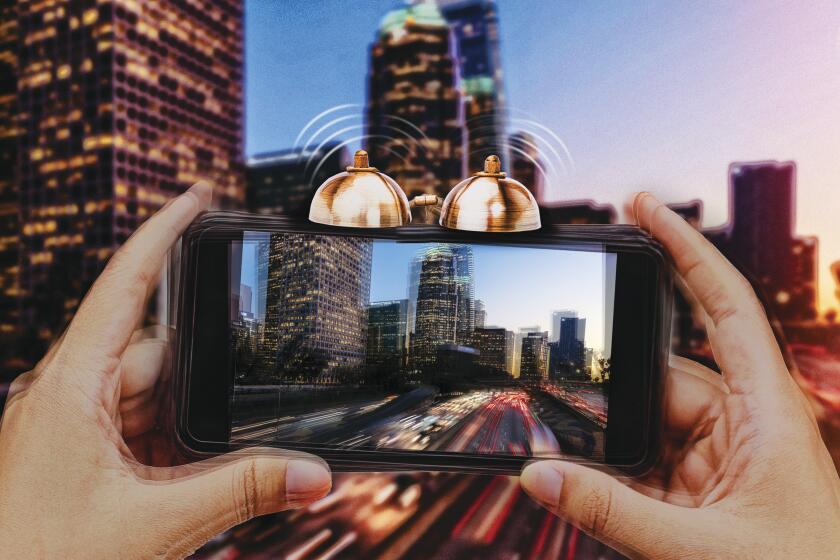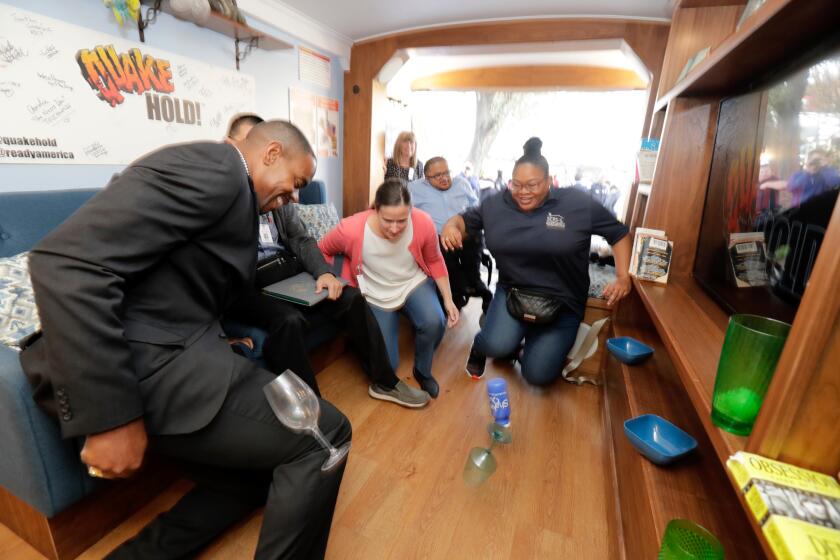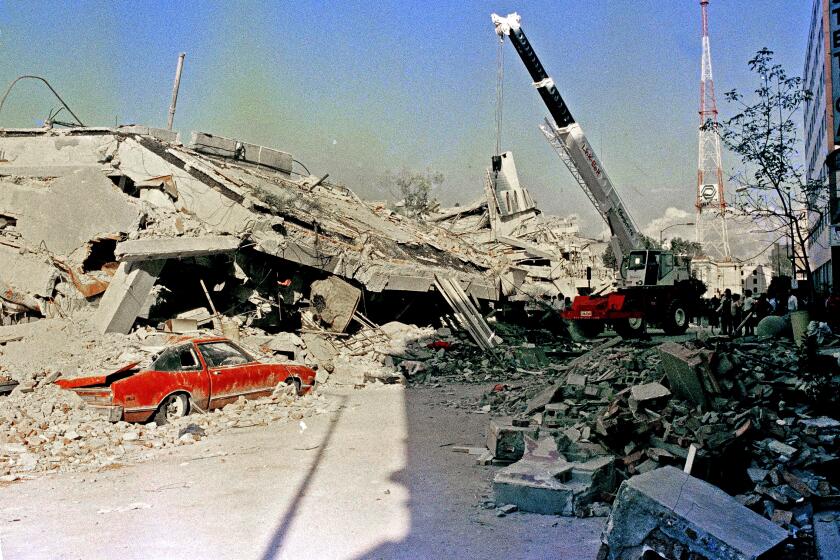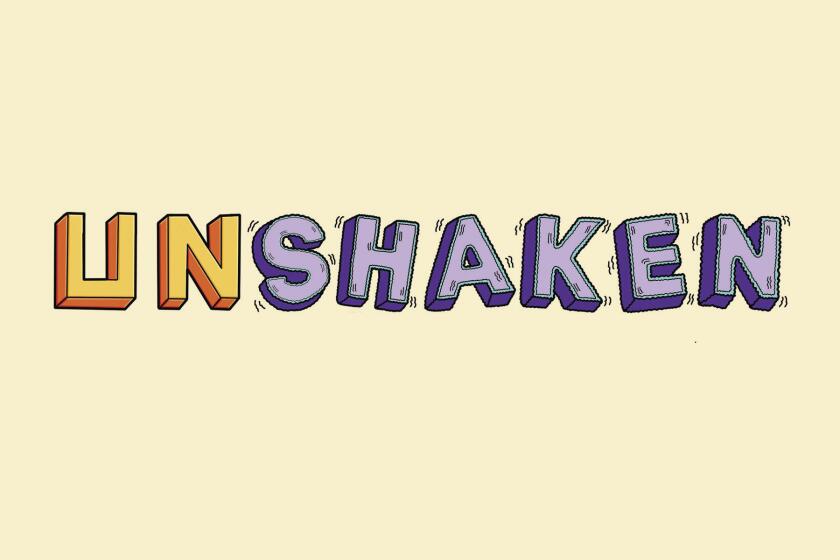Bay Area earthquake came with early warning for 2.1 million ShakeAlert app users
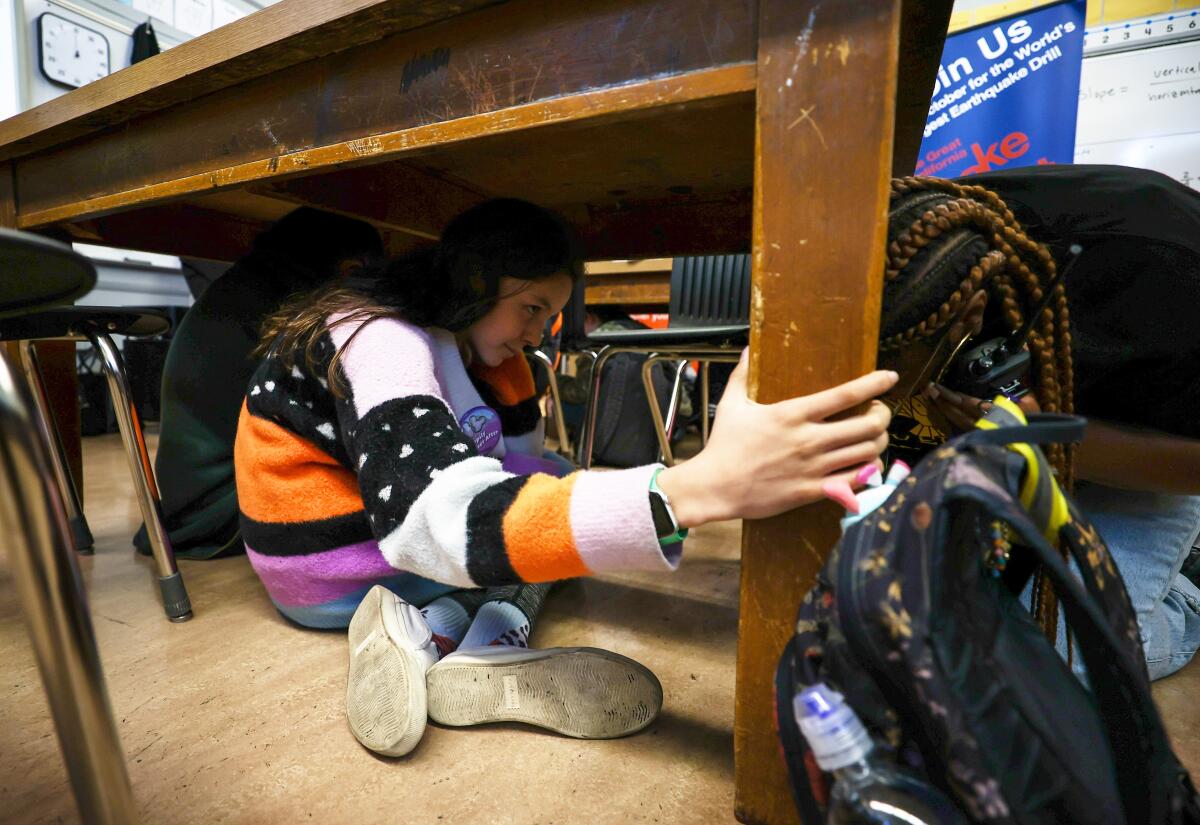
- Share via
Many San Francisco Bay Area residents were given several seconds’ warning before the shaking arrived from a magnitude 5.1 earthquake that struck under the mountains east of San Jose this week.
The activation of the U.S. Geological Survey’s ShakeAlert system is the second time in six weeks that Bay Area residents got a warning before they felt shaking. Tuesday’s magnitude 5.1 earthquake was the most powerful to hit the Bay Area since the destructive Napa earthquake of 2014, which was magnitude 6.0.
More than 2.1 million earthquake alerts were issued to users Tuesday, said Robert de Groot, part of the ShakeAlert operations team.
According to Gov. Gavin Newsom’s office, most were users of Android smartphones, which has the early-warning alert baked into its operating system. Nearly 100,000 users of the free MyShake app — developed by UC Berkeley and available on iOS and Android systems — also got the warning.
In addition, more than 420,000 alerts were issued during a magnitude 4.4 earthquake on Sept. 13, which struck beneath Santa Rosa.
MyShake is the early-warning app recommended for Southern Californians. But there are others you can download. What are they and which ones might you want?
“Both earthquakes have demonstrated that we can get out a massive number of alerts in a short period of time,” De Groot said.
Of the 2.1 million devices that got an early warning Tuesday, it was not immediately clear how many received alerts before the shaking started in their location, compared with devices that were activated as the shaking began or even after it had ended. Getting that answer will require more analysis.
Still, based on social media postings, many people said they got several seconds’ notice before they felt the quake, including people in San Jose, San Francisco, Oakland and Berkeley.
Shaking waves travel at the speed of sound traveling through rock, which is slower than the speed of today’s telecommunications services. That enables people farther from the epicenter of an earthquake to get a warning that shaking is coming in a matter of seconds.
Oakland Mayor Libby Schaaf said in a televised interview that she got a warning from the MyShake app on her cellphone just before the shaking started. Schaaf told KGO-TV that she had downloaded the free app a week earlier to prepare for the statewide ShakeOut earthquake drill.
“It really works,” Schaaf said.
With the new MyShake app, how many seconds would you get from an earthquake early warning?
How many seconds of warning people got depends on how far they were from the epicenter, located in the remote Diablo Range, about 2½ miles southwest of the Lick Observatory on Mt. Hamilton. Those less than 10 miles from the epicenter probably got no warning, according to the USGS.
That is expected because it takes time for the computer system to recognize the initial shaking as an earthquake and send out an alert.
Not everyone outside the 10-mile radius got a warning. Some got the alert but didn’t feel any shaking; others felt shaking but got no alert.
But many who were more than 10 miles away did get a warning, including people in nearby San Jose and Sunnyvale.
“Here in Berkeley, I got an early warning 10 seconds before the shaking reached us from the M5.1 earthquake in San Jose,” Stefan Lasiewski tweeted. “This is the first real-world test that I have experienced.”
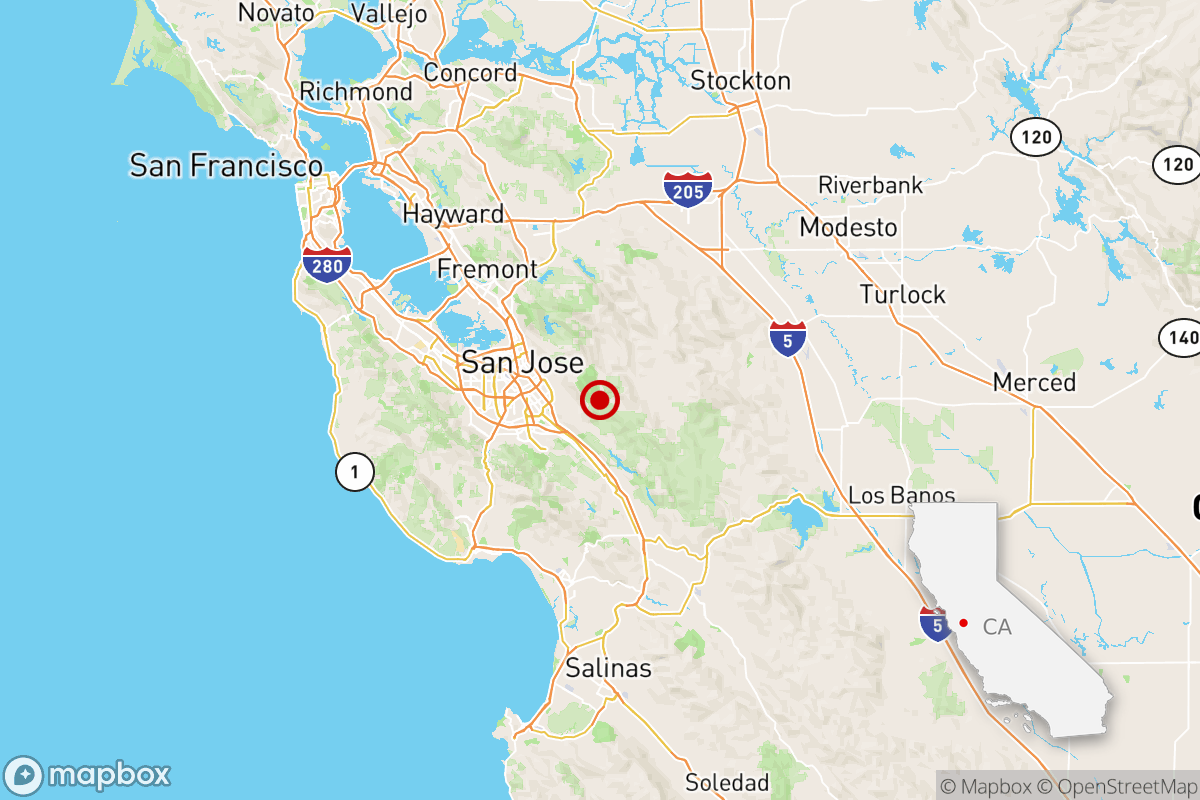
“In San Jose and got the notification too,” tweeted Elizabeth Pastor. “Thought it was another test at first, then I felt the shaking!”
Generally speaking, the farther people were from the quake’s epicenter, the more warning time they got. A person in Oakland also reported a 10-second warning. Someone in Pleasant Hill, a suburb in Contra Costa County, experienced shaking five seconds after getting an alert. One person in Hollister, in San Benito County, got about three seconds’ warning.
A Times reporter in Daly City, about 50 miles northwest of the epicenter, got an alert seconds before the shaking arrived at his location. The warning time was long enough for him to suspect it was a false alarm before the car he was sitting in started shaking long enough for him to experience motion sickness.
Even an alert that arrives after shaking has started can be helpful, giving a user confirmation that the shaking is indeed an earthquake.
Japan has a sophisticated system to alert its residents, and Mexico City has ubiquitous sirens. Is California’s early warning system ready?
In addition, some residents got earthquake warnings Tuesday through the Wireless Emergency Alert system, which sends text messages to cellphones in areas calculated to have significant shaking.
The Wireless Emergency Alert system is similar to the Amber Alert system, which issues messages to phones to help recover abducted children.
In an earthquake, P waves — or compressional waves — arrive first but usually don’t cause much damage; they’re followed by the S wave, or shear wave. Of the two, it’s most likely that an S wave brings damaging shaking.
That’s why, experts say, it’s important that people drop, cover and hold on when they hear an earthquake early warning or, if they don’t get an alert, start feeling the first shaking of a seismic event. (The notion about standing in a doorway to protect yourself in an earthquake is a myth.)
The guide to earthquake readiness and resilience that you’ll actually use.
There are several apps available on smartphones that can carry the alerts in California triggered by the USGS’ ShakeAlert system, and all are free to use: MyShake, developed by UC Berkeley; QuakeAlertUSA, developed by Santa Monica-based Early Warning Labs; and ShakeReadySD, an app developed for San Diego County but works statewide. The first earthquake early-warning app available for L.A. County, ShakeAlertLA, has been retired.
According to Newsom’s office, with the success of the early-warning system, the MyShake app was downloaded more than 108,000 times following Tuesday’s quake, a single-day record for downloads.
For the app to work ideally, users should allow location access at all times. Doing so enables the delivery of more accurate alerts targeted to a specific location.
For those who would rather not enable location sharing, the MyShake app offers the option to type in a “HomeBase,” in which alerts are calculated around a designated location.
The app doesn’t store addresses; the program uses locations to anonymously assign the phone to a six-mile-by-six-mile square on a grid.
The app can still send audible alerts even if the phone is set to silent. For instance, on an iPhone, the MyShake app default notification setting is set to allow “critical alerts,” which appear on the lock screen and play a sound even if the phone is muted or in a “Do Not Disturb” setting. Users can still choose to silence “critical alerts.”
More to Read
Sign up for Essential California
The most important California stories and recommendations in your inbox every morning.
You may occasionally receive promotional content from the Los Angeles Times.
